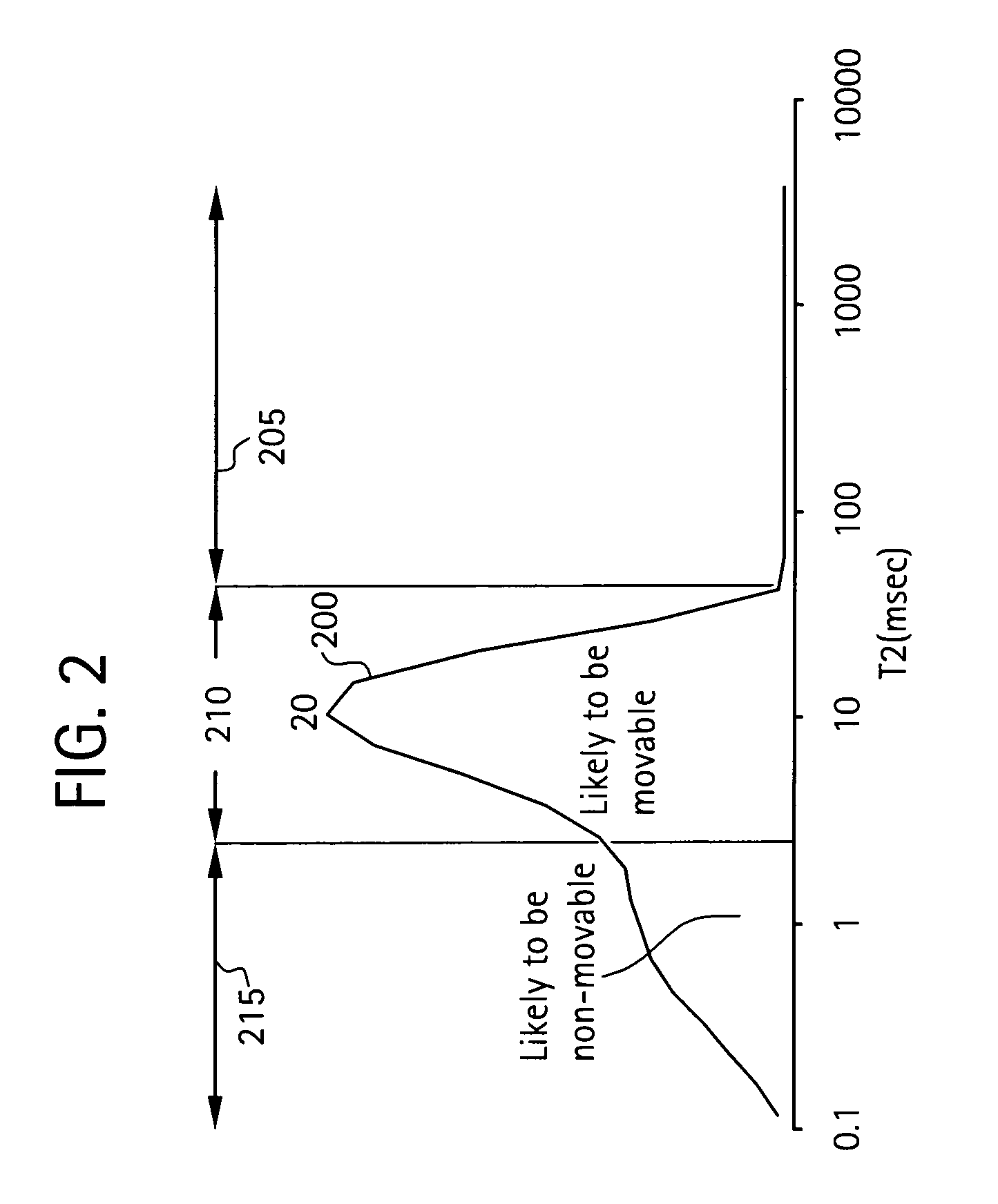Method and apparatus for characterizing heavy oil components in petroleum reservoirs
a petroleum reservoir and heavy oil technology, applied in the field of petroleum reservoir formation and fluid identification, can solve the problems of inability to utilize tsub>2 /sub>distribution for providing the need information of fluid component analysis, and the correlation is a less reliable quantity for heavy oil characterization
- Summary
- Abstract
- Description
- Claims
- Application Information
AI Technical Summary
Benefits of technology
Problems solved by technology
Method used
Image
Examples
Embodiment Construction
[0020]In an embodiment of the invention, an analytical method determines separately the movable and extra-viscous components of heavy crude oils, which may be used to assess the producible volume and the likelihood of occurrence of asphaltene-precipitation caused formation clogging. NMR logging is used to determine heavy oil volume, and non-NMR logging is used to provide additional CBW information.
[0021]FIG. 1 is an exemplary embodiment of a nuclear magnetic resonance (NMR) well logging apparatus 100 suitable for detecting and quantifying a parameter of interest (discussed in more detail below) in a subterranean region. In an exemplary embodiment, apparatus 100 includes a magnetic field and field gradient generator 105, such as a permanent magnet for example, a RF signal generator 110, a resonance circuit and receiver 115, a processing circuit 120, and a storage medium 125. In an exemplary application, logging apparatus 100 is suspended in a borehole 130 via a cable 135, a pulley 14...
PUM
 Login to View More
Login to View More Abstract
Description
Claims
Application Information
 Login to View More
Login to View More - R&D
- Intellectual Property
- Life Sciences
- Materials
- Tech Scout
- Unparalleled Data Quality
- Higher Quality Content
- 60% Fewer Hallucinations
Browse by: Latest US Patents, China's latest patents, Technical Efficacy Thesaurus, Application Domain, Technology Topic, Popular Technical Reports.
© 2025 PatSnap. All rights reserved.Legal|Privacy policy|Modern Slavery Act Transparency Statement|Sitemap|About US| Contact US: help@patsnap.com



